The animal park gallery in Bryan, TX, features our residents at their best. Visit our park to experience an adventure with your family and friends.
Serengeti of the South Pasture

Aoudad
Scientific Name: Ammotragus Iervia
IUCN status: Vulnerable
Range: Northern Africa
Fun Fact: Aoudads are closely related to goats and sheep, but actually belong to their own unique taxonomic genus. The number of aoudad living in North America is almost 7 times greater than those living in North Africa.
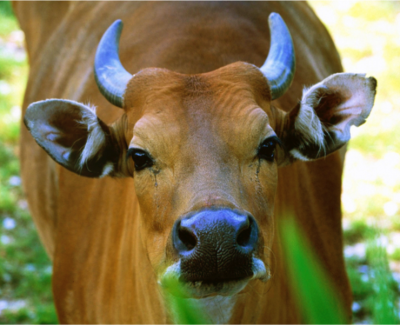
Banteng
Scientific Name: Bos javanicus
IUCN status: Endangered
Range: South Asia
Fun Fact: While there are over 1.5 million domesticated Banteng in Southeaster Asia, only 5,000 – 8,000 remain in the wild.
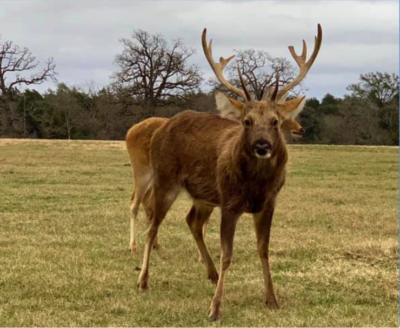
Barasinga
Scientific Name: Rucervus duvaucelii
IUCN status: Vulnerable
Range: Indian Subcontintent
Fun Facts: Also known as the Swamp Deer, the Barasingha has wide splayed hooves to better walk in flooded fields.

Blue Wildebeest
Scientific Name: Connochaetes taurinus
IUCN status: Least Concern
Range: South and Southeast Africa
Fun Fact: Female Blue Wildebeest form herds of 10 – 1,000 individuals; but, every year 1.5 million wildebeest gather to partake in the one of the greatest migrations on Earth.

Common Eland
Scientific Name: Tragelaphus oryx
IUCN status: Least Concern
Origin: Southern Africa
Fun Facts: The Common Eland is the second largest antelope in the world. The male’s spiraling horns can reach over 4ft in length.

Eld’s Deer
Scientific Name: Rucervus eldii
ICU status: Endangered
Range: India, Southeast Asia
Fun Fact: The Eld’s Deer is important prey of the Bengal Tiger in India.
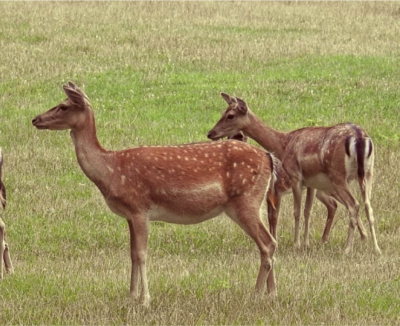
fallow deer
Scientific Name: Dama dam
IUCN status: Least Concern
Origin: urasia
Fun Fact: In captivity, there are four different color varieties of fallow deer: black, white, normal, menil (light brown to yellow). See if you can spot them all!

Nilgai
Scientific Name: Boselaphus tragocamelus
IUCN status: Least Concern
Range: Indian Subcontinent
Fun Facts: The Nilgai is the largest of the Asian Antelope, with males reaching up to 635lbs. A large feral population exists in Texas, with 37,000 individuals.
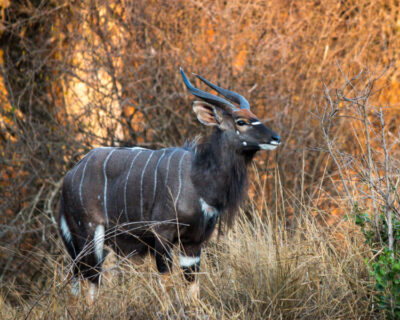
Nyala
Scientific Name: Tragelaphus angasii
IUCN status: Least Concern
Origin: South Africa
Fun Fact: The Nyala is a herbivore. They feed on a range of leaves, twigs, grasses, flowers and fruit.
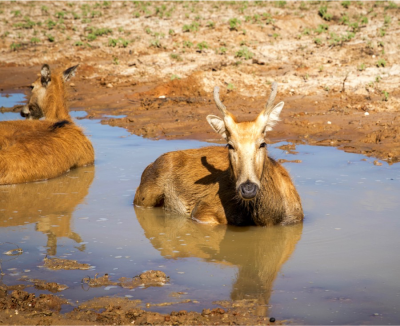
Père David’s Deer
Scientific Name: Elaphurus davidianus
IUCN status: Extinct in the Wild
Range: China
Fun Facts: The Père David’s Deer is the only extant (surviving) member of their genus. Multiple reintroduction efforts are underway at various parks in China.

Red Lechwe
Scientific Name: Kobus leche
IUCN status: Non-Threatened
Range: South Central Africa
Fun Facts: Their legs are covered in a water-repellant substance which allows them outrun predators in knee-deep water.
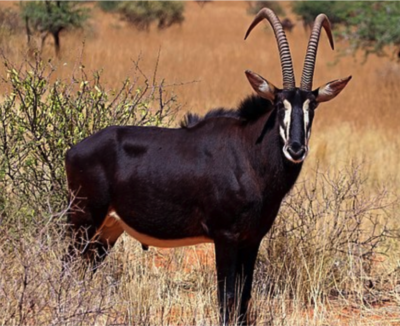
Sable Antelope
Scientific Name: Hippotragus niger
IUCN status: Least Concern
Range: Southeast Africa (Kenya to South Africa)
Fun Fact: The curved horns of the Sable Antelope can reach over 5ft in length. These horns are used to fend off predators and battle other males for control of herds.
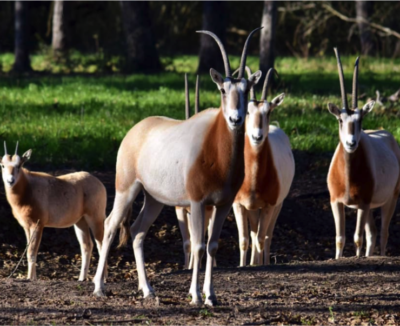
Scimitar-horned Oryx
Scientific Name: Oryx dammah
IUCN status: Extinct in the Wild
Range: Formerly North Africa
Fun Facts: The Scimitar-horned Oryx was classified as extinct in the wild in 2000. Captive breeding efforts have successfully prevented full extinction of this species, and a small population was reintroduced to North Africa in 2016.

Zedonk
Scientific Name: Hybrid
IUCN status: Not evaluated – Hybrid
Origin: Africa
Fun Fact: Chromosome differences resulting from hybrid breeding render Zedonk males sterile, and females very rarely are capable of producing offspring.
